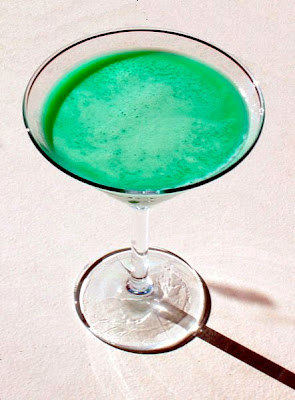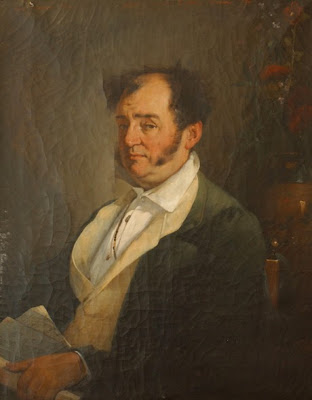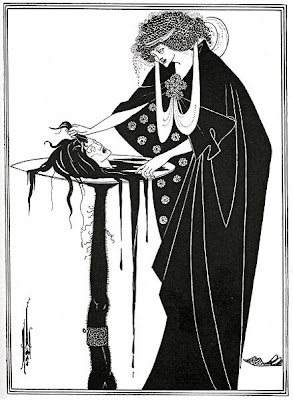Cheers to spring with Le Grasshopper cocktail
made fresh with Corsican mint
Corsican Mint, Mentha requienii
Recently I have been hanging out at some French websites and blogs looking for information on this, one of their native plants. I was able to discover the history of the man behind this mint as well as a terrific recipe for mousse au chocolat which uses Corsican mint as an ingredient.
I grow mine in a pot with a saucer of water underneath. It likes a cool shady spot and pictorial labels at nurseries will often claim it can be grown as a ground cover between paving stones and walked on, however the climate here is too dry and variable for this to be achieved without sub-surface irrigation and a lot of spare time to weed amongst the "carpet". Good luck to those who try. In a pot it can be kept on a table where it can be stroked like a pet cat to release the fragrance from the leaves and to recall the eminent Frenchman Esprit Requien (1788-1852) who grew up in Avignon and had a great passion for the natural world of plants and animals found in his region. He is forever remembered in that city by the natural history museum he helped establish, Le Museum Requien at 67 rue Joseph Vernet, as well as for his conservation efforts to save the medieval parts of the town from demolition during the 19th Century. As a young botanist he travelled to Corsica, documenting the flora of the island, and naming many new species. Imagine his delight at discovering this mint and how pungent and fragrant the leaves would have been to his senses especially if the day was hot and he had found a shady spot to rest. Requien obviously fell in love with the island and died at age 64 at Bonifacio, a town in the extreme south of Corsica, a place where the language merges with the Italian of Sardinia just across the water.
I grow mine in a pot with a saucer of water underneath. It likes a cool shady spot and pictorial labels at nurseries will often claim it can be grown as a ground cover between paving stones and walked on, however the climate here is too dry and variable for this to be achieved without sub-surface irrigation and a lot of spare time to weed amongst the "carpet". Good luck to those who try. In a pot it can be kept on a table where it can be stroked like a pet cat to release the fragrance from the leaves and to recall the eminent Frenchman Esprit Requien (1788-1852) who grew up in Avignon and had a great passion for the natural world of plants and animals found in his region. He is forever remembered in that city by the natural history museum he helped establish, Le Museum Requien at 67 rue Joseph Vernet, as well as for his conservation efforts to save the medieval parts of the town from demolition during the 19th Century. As a young botanist he travelled to Corsica, documenting the flora of the island, and naming many new species. Imagine his delight at discovering this mint and how pungent and fragrant the leaves would have been to his senses especially if the day was hot and he had found a shady spot to rest. Requien obviously fell in love with the island and died at age 64 at Bonifacio, a town in the extreme south of Corsica, a place where the language merges with the Italian of Sardinia just across the water.
Buste d'Esprit Requien, Botanic Garden, Avignon
photo: Veronique Pagnier
Requien was one of the first scientists to develop the concept of "phytosociology" in his work with the flora of the famous Mont Ventoux describing how different plants and animals are associated with different altitudes.
Esprit Requien (1788-1852)
Recently the Museum Requien held an exhibition on Australian fauna and flora. I am sure he would have found this country a fascinating place to visit.

















.jpg)
